Expedition to the ancestors. Finds on the "Bellied Hill"
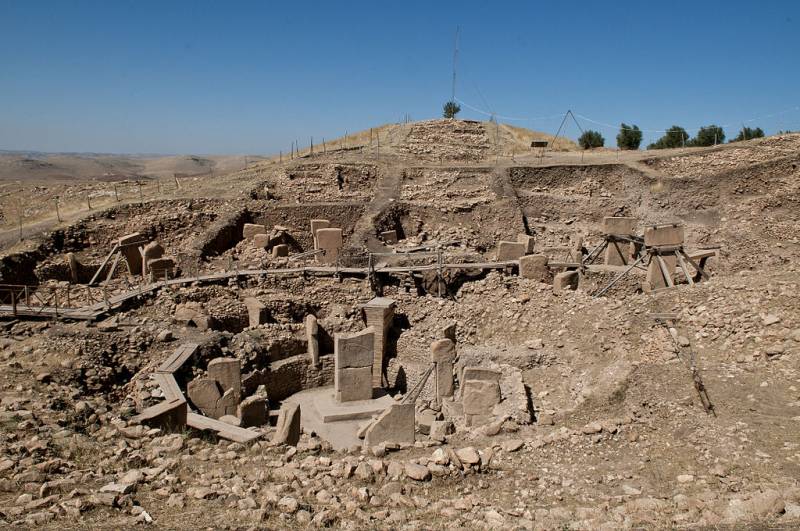
View of the Gobekli Tepe excavations
7 Kings 12: XNUMX
Migrants and migrations. Today we will digress from the problems of the ancient Egyptians and again turn to the topic... stones. Stones that in the past people piled up for unknown purposes in various places, and which today are called dolmens, menhirs and cromlechs, and in general - megaliths. And there is a certain time frame in which they did this strange thing - not earlier and not later. But, as always, there are no rules without exceptions. Namely, a place that is not only uncharacteristic of a megalithic culture, but it also does not fit it in time! And, by the way, no one still knows why. We will talk about a unique place called Gobekli Tepe, which translated from Turkish means “Bellied Hill”.
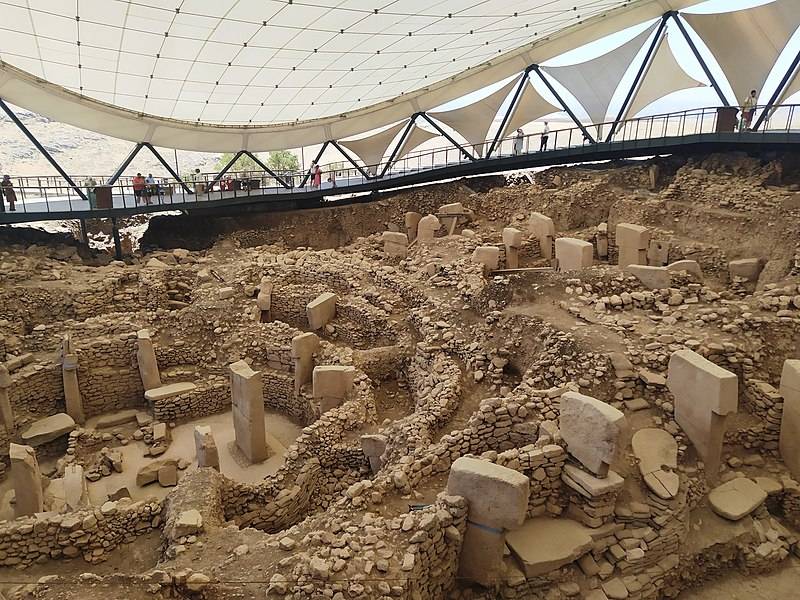
Excavations under the roof
Today it is a UNESCO monument...
First, let's see what is known for sure about this place today. First of all, it was discovered in 1963, but its value was realized only in 1994, and excavations there began a year later. In 2018, Göbekli Tepe was included in the UNESCO World Heritage List, which certainly speaks for itself. Moreover, as of 2021, only about 5% of the territory has been excavated there. And we can only guess what will happen when 95% of the excavations there are covered...
During the excavations, it was possible to find out that people lived here from about 9500 and at least until 8000 BC. e. That is, in the Neolithic era, and not just a Neolithic, but a pre-ceramic Neolithic. And it was there that massive stone columns were discovered. In terms of time, they are the oldest of all known megalithic structures in the world. Moreover, many of them are decorated with reliefs depicting wild animals and people, which gives archaeologists a rare opportunity to study the iconography of this era. The territory of the settlement itself, about eight hectares, is densely covered with the remains of domestic buildings, Neolithic cisterns carved from stone, and there is also a quarry for stone extraction. It is interesting that the first permanent settlements appeared precisely at this time, but megalithic buildings were not typical for it, especially near housing. Moreover, it is interesting that in the Gobekli-Tepe region there is no clear evidence of agricultural activity, but it was agriculture in all other places that fed the people of the megalithic culture.
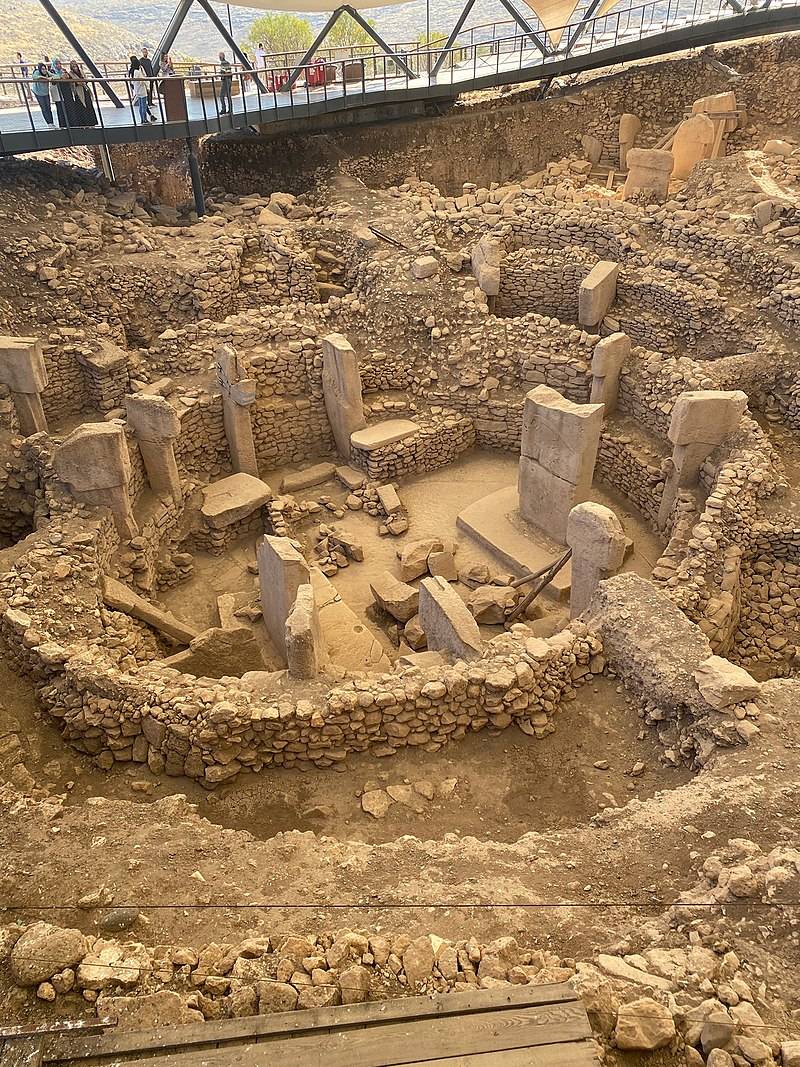
Here they are - the legendary “circles” of Gobekli Tepe
According to the archaeologist Klaus Schmidt, who discovered this settlement, it was the oldest sanctuary in the world, the world's first stone temple, which was used by nomadic hunter-gatherers, and its permanent inhabitants were... clergy. He also wrote that they were deliberately buried for ritual purposes. But recent stratigraphic studies, which he, naturally, could not have known about, showed that they were filled up by landslides, and then restored more than once. Moreover, it should be noted that although this place is considered unique, stone steles, albeit of a simpler form and without bas-reliefs, were found here and in other places, including Chayenu. That is, stones “on the butt” in this area in ancient times were also placed in other places. It’s just that in Gobekli Tepe their installation is very “cultivated”, so to speak, and, moreover, is of a massive nature.
What do paleoclimatology and archaeozoology say?
Paleoclimatology has revealed that the climate in this area at that time was warmer and more humid than it is now. And rains were not uncommon, which caused mudflows to roll down from the mountains. All around were meadows with wild grains, including wheat and barley. The grasslands were home to herds of wild herbivores, including gazelles, who may have passed by the site on their seasonal migrations from north to south and back again. There were no forests nearby, but individual pistachio and almond trees grew, as evidenced by the finds of corresponding charcoal.
All this suggests that the inhabitants of Gobekli Tepe were hunter-gatherers, but they already supplemented their diet with early types of domesticated cereals. It is possible that they were already sedentary for part of the year. In any case, the finds of mortars and pestles indicate that grain processing took place here, and this clearly requires settling down, even if only temporarily. Well, archaeozoological finds indicate to us that the inhabitants of Gobekli Tepe had a large-scale hunt for gazelles, which began in mid-summer and continued until the onset of autumn. Residents obtained drinking water from drainage canals, which filled cisterns with rainwater. Their capacity was at least 150 cubic meters, that is, quite large. Today there are no underground water sources, but in those wetter times the groundwater level was much higher, so there may well have been some here. Moreover, new radiocarbon dating established the absolute chronology of this place - from 9500 to 8000 BC. e.
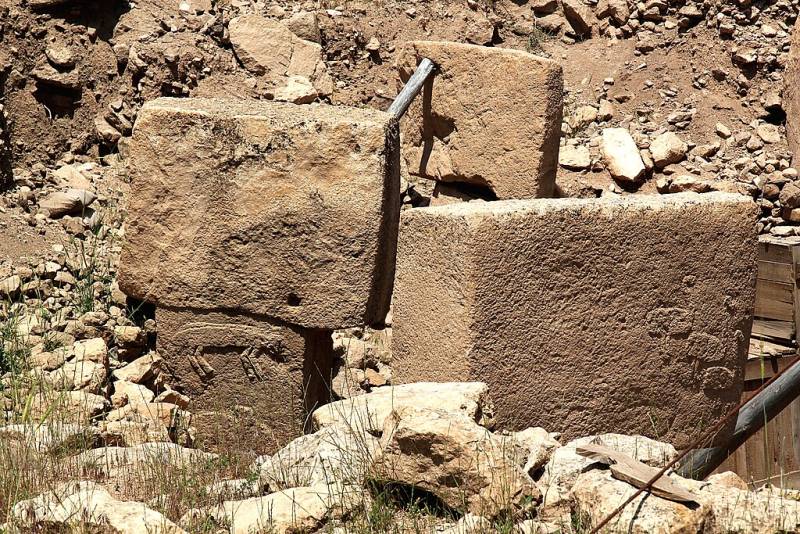
Stones with carved images
How long did it take to build it?
It turns out that this complex took a very long time to build. In eight successive stages that took about 1500 years. The earliest phase consisted of the construction of the first outbuildings and the first "circles" of vertically placed stone blocks.
At the second stage (this is already the beginning of the XNUMXth millennium BC), the fences or circles, which archaeologists call AD, were completed. After which new walls were erected, including the first T-shaped monoliths. Other circular structures were also built.
Stages 3-5 were again associated with the construction of rectangular (domestic) structures on the northern and western slopes of Gobekli Tepe. The old walls were repaired and new ones were added. Stone benches were placed along the inner sides of the walls of the second stage. But then a landslide occurred, which caused serious damage to fence D. People thought and built a stone terrace to prevent landslides in the future. But nature turned out to be stronger, and a secondary landslide at the end of the XNUMXth millennium buried fence D.
In phases 6 and 7 (late XNUMXth–early XNUMXth millennium BC), Building G and the “lion pillar building” were built, followed by another terrace wall to prevent landslides.
The last, 8th stage was the most “uninteresting”. The “temple” was abandoned, and small dwellings were built in its place, most likely having nothing to do with the ancient complex.
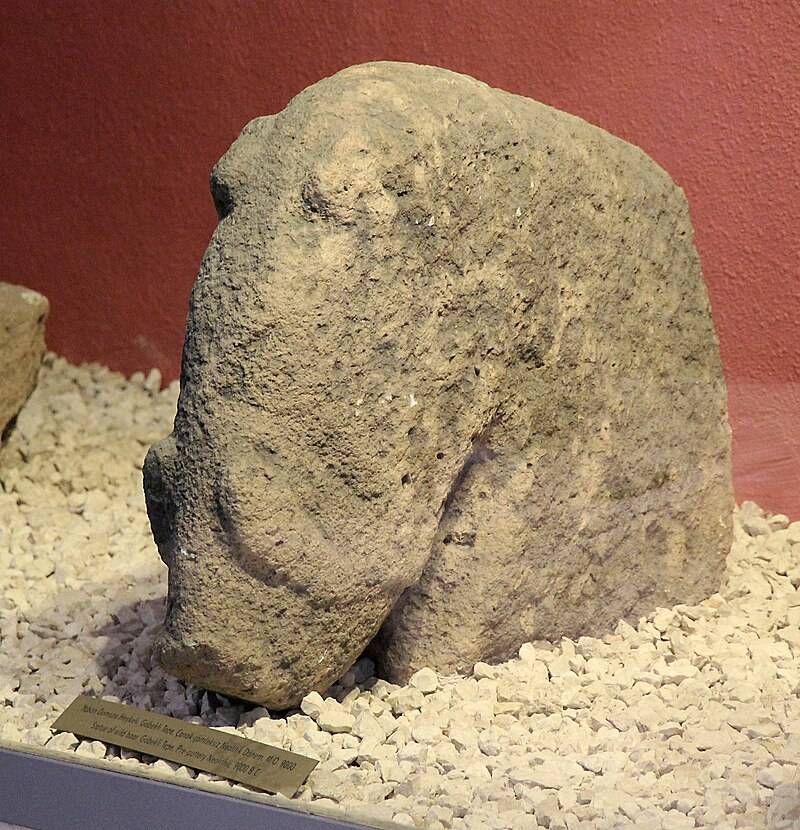
Stone boar
If you look at the excavations from above...
If we look at the Gobekli Tepe structures from above, we will see round fences A, B, C and D and also the remains of several rectangular buildings. The diameter of the round structures varies from 10 to 30 m. The most amazing are the T-shaped columns, evenly spaced inside thick internal walls, which are made of rough stones. As many as four such structures have been excavated, with a total of almost 200 stone pillars. They didn’t have to be dragged far: the quarry where they were cut down is located about 100 meters from the place where they were installed. Flint tools were used in the work. Today these columns are the oldest known megaliths in the world!
What is completely unknown and what can only be guessed at is whether these stone circles had a roof or not? The reliefs decorating the columns depict lions, bulls, wild boars, foxes, gazelles and donkeys, as well as snakes, spiders and birds, usually vultures. Interestingly, both in Çatalhöyük and in Jericho.
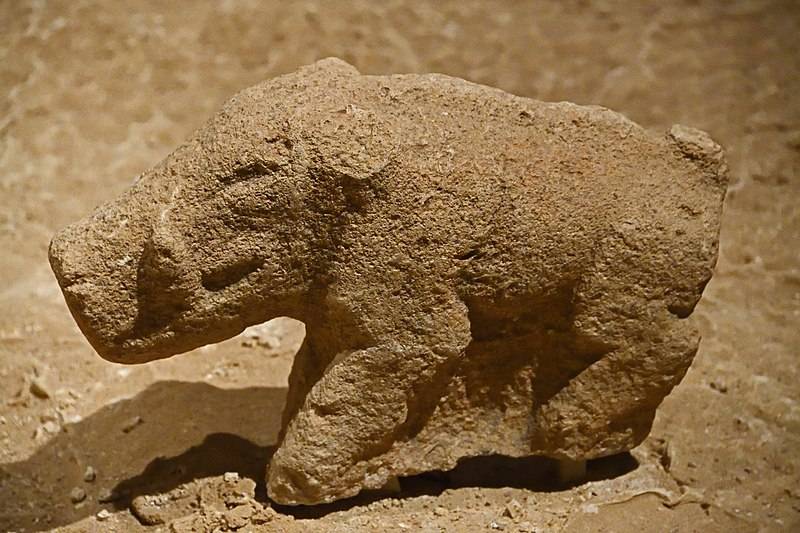
Another boar...
What are the carved figures silent about?
There are also images of humanoid figures in Gobekli Tepe. The T-shaped pillars depict human hands as well as loincloths, which is quite amazing. It is unknown what such… “whimsical” images were intended for and what purpose they served. In any case, this is clearly a cult, and a cult of what, we will most likely never know.
The floors in the “temples” are either leveled rock from which pedestals were cut for a pair of central T-shaped columns. Or is it compacted lime.
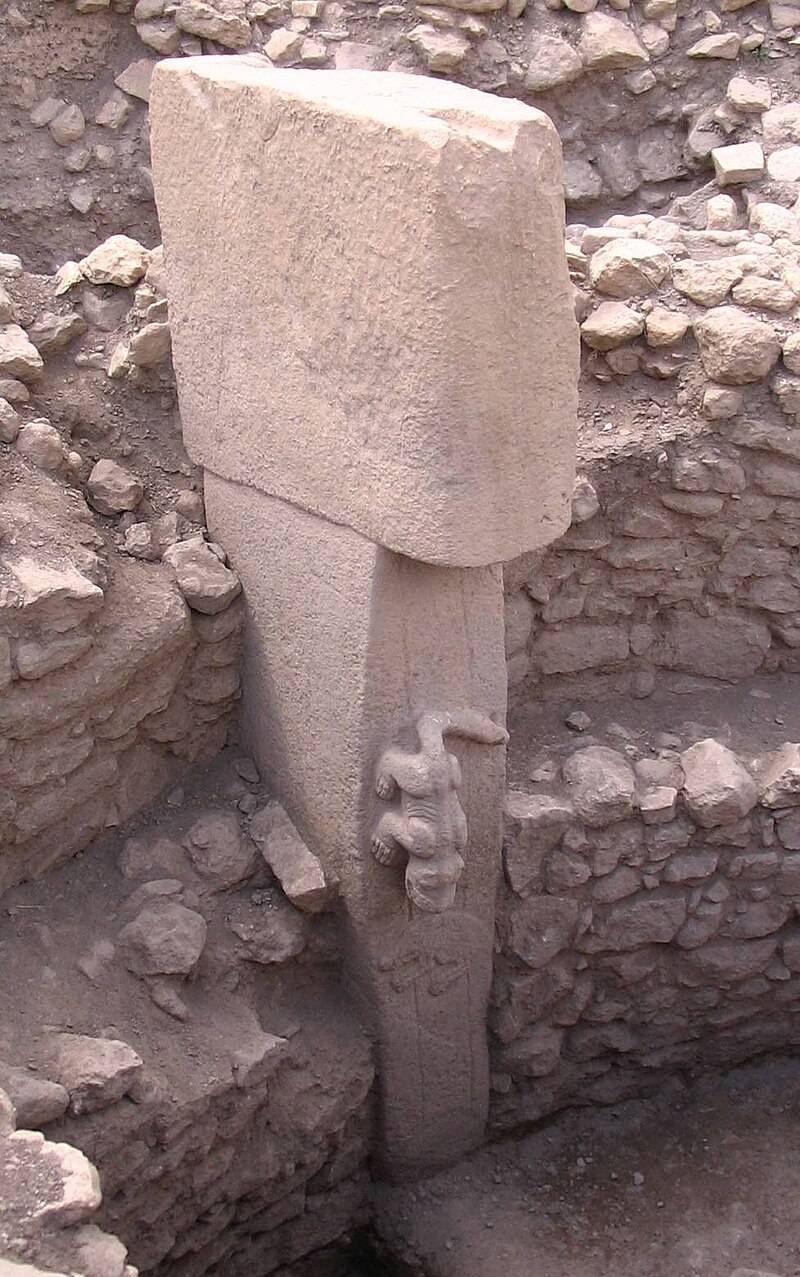
T-shaped stone
Later fences are already rectangular in shape, but T-shaped columns are also present here, that is, the function of the structure itself has not changed, although the external fence is different. The circular structures date back to 9000 BC. BC, but the limestone floors in the rectangular buildings give us dates between 8800 and 8000 BC. e. That is, the rectangles were built later. Moreover, usually T-shaped pillars up to 1,5 meters high are located in the center of the room. Fierce lions are depicted on two pillars. Therefore, the room where they were excavated was called the “building on lion pillars.”
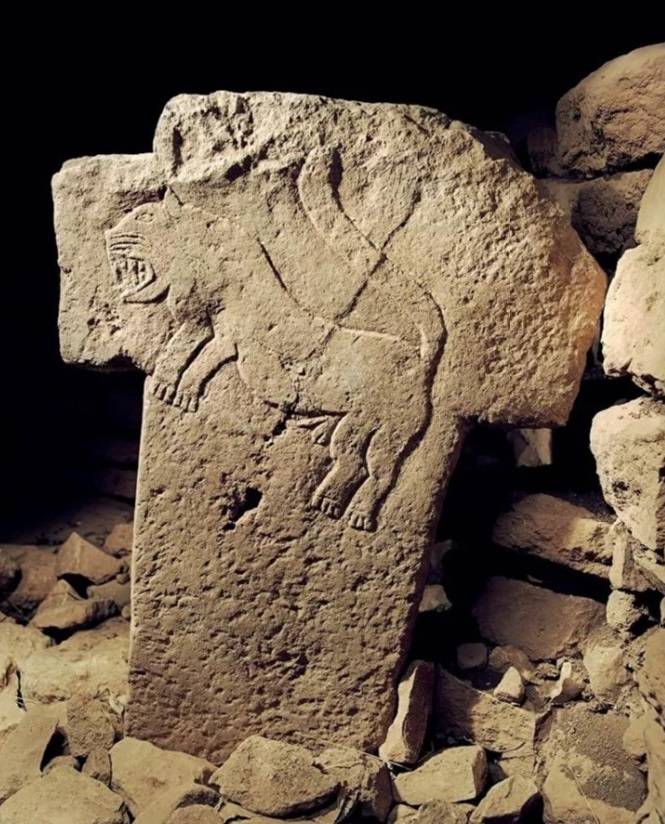
"The Angry Lion"
In general, Gobekli Tepe is such an interesting place that it is simply impossible to tell about it in one material.
To be continued ...
Information